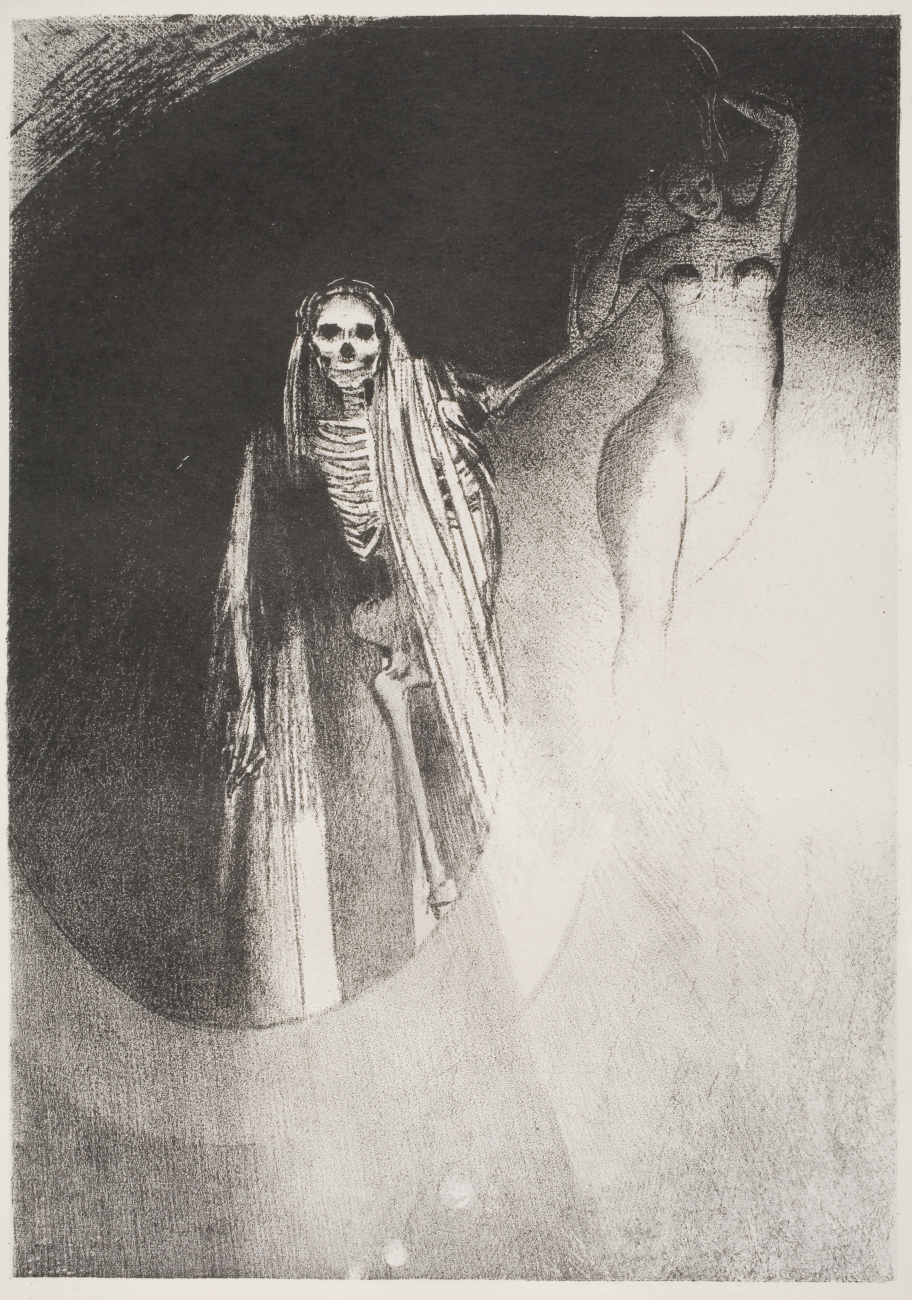La Mort: C'est moi qui te rends sérieuse: Enlaçons-nous (Death: It is I who Makes You Serious; Let Us Embrace), plate 20 from the series "La Tentation de Saint-Antoine" (The Temptation of Saint Anthony)

Odilon Redon (French) (b. 1840, Bordeaux, France – d. 1916, Paris, France)
La Mort: C'est moi qui te rends sérieuse: Enlaçons-nous (Death: It is I who Makes You Serious; Let Us Embrace), plate 20 from the series "La Tentation de Saint-Antoine" (The Temptation of Saint Anthony), 1896
Lithograph sheet: 17 1/8 in. x 13 in. (43.5 cm x 33 cm)
Gift of Mrs. Toivo Laminan (Margaret Chamberlin, Class of 1929)
1963.3
During his solitary retreat in the Egyptian desert, Saint Anthony of Egypt (AD 251-356) is said to have held fast to his faith despite a series of temptations and torments issued by the Devil. So bizarre is the imagery of monstrous creatures and supernatural temptations that the legend has been the subject of numerous and varied works of art and literature since the Middle Ages, including paintings by Hiëronymus Bosch, Michelangelo, and Salvador Dalí, among others, as well as a play written by Gustave Flaubert (1821-1880), which inspired the creation of this particular print.
La Mort: C'est moi qui te rends sérieuse: Enlaçons-nous is one of twenty-four prints by the French artist Odilon Redon (1840-1916) that illustrated Flaubert's play Temptation of Saint Anthony, a lesser-known work of the literary giant but one that Flaubert labored on painstakingly throughout his life. A contemporary to Flaubert, Redon had worked in lithography for about two decades when the final version of Temptation of Saint Anthony was published. Already working with a repertoire of dark and absurd subjects, Redon was drawn to the grotesque characters described by Flaubert and wrote fondly of the play, calling it “a literary marvel and a mine for me”.
La Mort depicts a scene in the play where Death and Lust, disguised respectively as an emaciated old woman and a fair young one, reveal their real likenesses after failed attempts to seduce Saint Anthony:
The winding-sheet flies open, and reveals the skeleton of Death. The robe bursts open, and presents to view the entire body of Lust, which has a slender figure, with an enormous development behind, and great, undulating masses of hair, disappearing towards the end.
Death tries to lead Saint Anthony to step into the abyss under the cliff and take his own life, thereby ending all pain. "It is I who make you serious, let us embrace each other," she says, telling Saint Anthony that, by destroying himself, a work of God, he will become God’s equal.
Redon’s accomplished use of chiaroscuro, the sharp contrast between light and dark, underscores the dramatic nature of this moment. Death’s winding-sheet is enveloped by the dazzling rays of light radiating from the voluptuous body of Lust, and Lust’s hair vanishes into the darkness that seeps through Death’s skeletal body. Although the appearance of Lust differs greatly from that of Death, the overlap of their bodies suggests that they are but different phantoms created by the Devil.
Ningyi Xi ‘17
Davis Museum Summer Intern